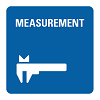Turn on suggestions
Auto-suggest helps you quickly narrow down your search results by suggesting possible matches as you type.
Showing results for
Topic Options
- Subscribe to RSS Feed
- Mark Topic as New
- Mark Topic as Read
- Float this Topic for Current User
- Bookmark
- Subscribe
- Mute
- Printer Friendly Page
Is there any better way of optimizing memory?
Member
11-09-2005 01:05 AM
Options
- Mark as New
- Bookmark
- Subscribe
- Mute
- Subscribe to RSS Feed
- Permalink
- Report to a Moderator
Hi Friends!
I am new to Labview and need some help. In a VI sescibed below I would like to know about optimizing the memory.
Problem: Needs to take the values of 7 physical quantities for three different time intervals. Each physical quantity has individual elements(which are clusters) whose number actually depends on the user input ( can be of any number).
What I have done: I had first constructed an
1. Array(Let it be array1 for discussion) of three elements(For three time intervals) each element is a cluster(Let be Level 1 Cluster)
2.Cluster(Level1) has 7 arrays(Let them be Level 2 arrays) to represent 7 physical quantities
From the concepts of arrays in the C each element of the array occupies same memory space. But does this concept applicable here. As I have elements in a cluster(level1) as arrays(Level 2). Each one of the array(Level2) could be of different size depending on user input.
If there is another way to handle them please help me with ur valuable suggestion.
Siddhu.
Member
11-17-2005 02:07 PM
Options
- Mark as New
- Bookmark
- Subscribe
- Mute
- Subscribe to RSS Feed
- Permalink
- Report to a Moderator
I don't quite understand why optimizing memory here is required as the
data set does not seem very large. That being said, clusters use
(relatively) a lot of memory, and nested arrays/clusters are generally
considered poor programming. It seems to me that this can be
handled with a 3D array (much more memory efficient): 3 pages for
the time intervals, 7 rows for the physical quantities and an
indeterminite number of columns for the individual elements. How
to handle the array depends on what are valid values for the individual
elements. If the data type is numeric and 0 is not a valid user
input value, then it's easy. Just build the array row by
row. Each row will have the number of columns equal to the
largest number of individual elements entered. Data that has not
been entered by the user will be 0. For example, at time interval
1:
PQ1: 9 2 7 4 1 8
PQ2: 8 7 2
PQ3: 1
PQ4: 4 6 8 2
PQ5: 2 3 4 5 6 7 8
PQ6: 4 2 7 9
PQ7: 2 4
The first page of the array would be:
9 2 7 4 1 8 0
8 7 2 0 0 0 0
1 0 0 0 0 0 0
4 6 8 2 0 0 0
2 3 4 5 6 7 8
4 2 7 9 0 0 0
2 4 0 0 0 0 0
If the data type is not numeric or 0 is a valid value, I would initialize a 3D array that is 3 X 7 X (something larger than the max # of individual elements) with some sort of invalid value. Then, as the user inputs individual elements, replace the appropriate array element. This also has the advantage of creating the array ahead of time so LabVIEW will not have to create any memory buffers.
Hope this helps.
Dave.
PQ1: 9 2 7 4 1 8
PQ2: 8 7 2
PQ3: 1
PQ4: 4 6 8 2
PQ5: 2 3 4 5 6 7 8
PQ6: 4 2 7 9
PQ7: 2 4
The first page of the array would be:
9 2 7 4 1 8 0
8 7 2 0 0 0 0
1 0 0 0 0 0 0
4 6 8 2 0 0 0
2 3 4 5 6 7 8
4 2 7 9 0 0 0
2 4 0 0 0 0 0
If the data type is not numeric or 0 is a valid value, I would initialize a 3D array that is 3 X 7 X (something larger than the max # of individual elements) with some sort of invalid value. Then, as the user inputs individual elements, replace the appropriate array element. This also has the advantage of creating the array ahead of time so LabVIEW will not have to create any memory buffers.
Hope this helps.
Dave.
==============================================




Active Participant
11-17-2005 05:00 PM
Options
- Mark as New
- Bookmark
- Subscribe
- Mute
- Subscribe to RSS Feed
- Permalink
- Report to a Moderator
My primary advice regarding memory management is AVOID BUILD
ARRAY! While most array operations are fairly memory efficient,
build array is a real hog.
Also, the bigger the array, the bigger the memroy hit. So try to do as many operations on as little data as you can. It can require some rather creative wiring.
Also, the bigger the array, the bigger the memroy hit. So try to do as many operations on as little data as you can. It can require some rather creative wiring.
